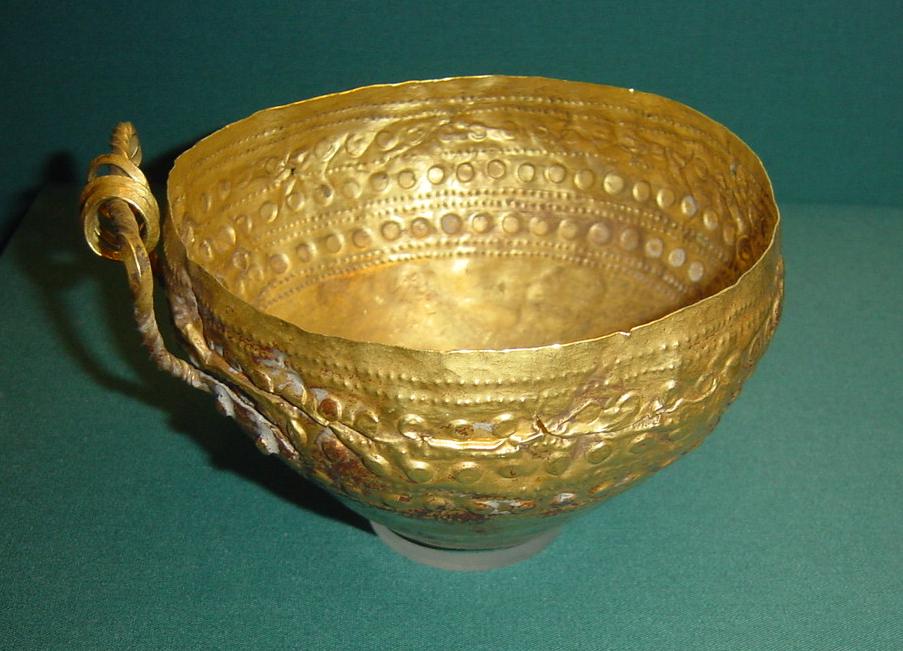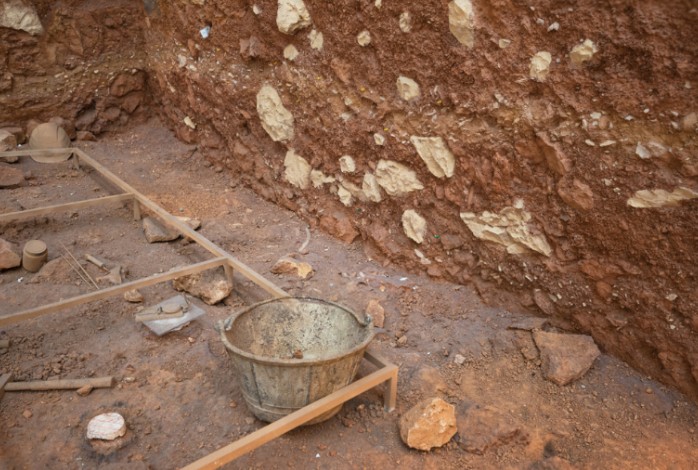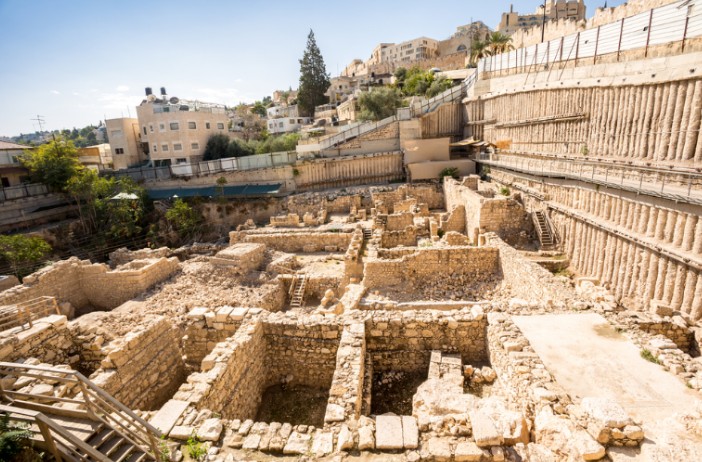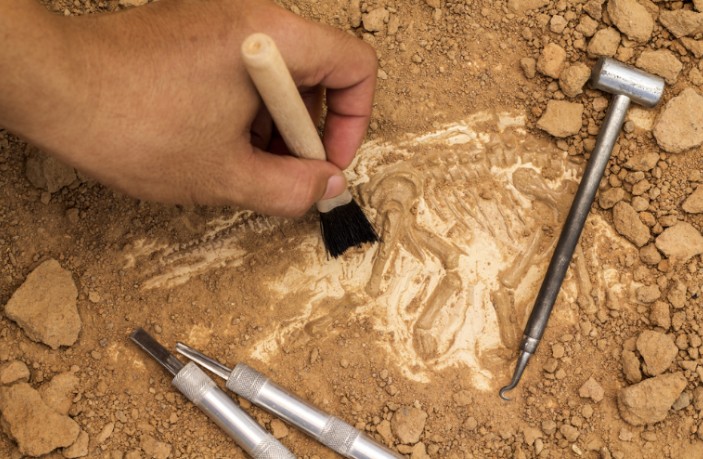Rabbi Zamir Cohen: "While Working on Volume B of Biblical Archaeology, I Couldn't Stop Being Amazed"
A new book in the 'Biblical Archaeology' series has been published. It is filled with thrilling descriptions and evidence of Jewish history. "Again and again, we encounter evidence confirming the past," says Rabbi Cohen.

The walls of Jericho, the battle of David and Goliath, the tabernacle in Shiloh, Joshua's altar on Mount Ebal—if these all sound like ancient history to you, you might be surprised to hear that clear and definitive evidence proving their existence and occurrence still exists today.
You can find this thrilling evidence detailed in Rabbi Zamir Cohen's new book, ‘Biblical Archaeology Part 2’. Truly, as you flip through the pages of this new book, it's impossible not to be fascinated. The book presents exciting archaeological discoveries that shine a brilliant light on the truth of the Bible, and the findings unearthed from the ground repeatedly testify to the tumultuous history of the people of Israel.

The new book follows the first in the series, ‘Biblical Archaeology Part 1’. While the first volume cited fascinating testimonies to events like the generation of the flood, the base of the giant tower that stood in Babel, the slavery of Israel in Egypt, and eyewitness accounts from a contemporary Egyptian of the ten plagues, the new book unveils equally exciting discoveries—from the entry of the Israelites into the land during the days of Joshua son of Nun, the conquest of Jericho, Ai, and Hazor, continuing with the settlement period and the establishment of the monarchy in Israel, the city of David and Jerusalem, and ending with the last days of King David.
Exciting and Surprising Findings
As already revealed in the first book in the series—there are quite a few archaeological findings discovered over recent decades, both in Israel and around the world, that validate Biblical accounts. Leafing through the book, you encounter them repeatedly, sparking awe and faith.
Rabbi, where do the impressive sources for the book originate?
"There are well-known discoveries and well-known Biblical names of cities and historical events," Rabbi Cohen responds, "but when each historical topic is thoroughly examined based on the archaeological findings at the relevant site, astonishing details emerge that are entirely unknown."
 (Illustrative photo: shutterstock)
(Illustrative photo: shutterstock)Like what, for example?
"Take the wall of Jericho for instance. It's known that the walls of the city fell when the Israelites circled them seven times. But not many know that non-Jewish archaeologists openly declared that the collapsed walls of Jericho discovered from that period clearly show that they were not breached in the usual manner during an enemy invasion, but rather fell inward as if struck by an earthquake. Of course, we included photos of the fallen walls in the book. But during my examination of the data, I suddenly discovered something interesting—the researchers reconstruct the walls of Jericho based on the findings, and it turns out that the wall served as one of the house walls in parts of the city. This detail instantly recalls the Biblical account of Rahab lowering the spies from her window outside the wall and the city: 'For her house was on the city wall.' Here, we see an incidental testimony from the archaeological findings on a remarkable detail that the researchers didn’t address."
Are there any particularly interesting findings that even surprised you, Rabbi?
"Yes, indeed. A great surprise for me was discovering that the area in Jerusalem known as the 'City of David', which tourists worldwide visit due to its remarkable discoveries, is not actually the City of David, but rather the ancient Jerusalem. Meanwhile, the real City of David was located further up, in the area between Mount Zion and the Tower of David. This conclusion has significant implications. The scripture states that King David and his descendants were buried in the City of David. Based on this understanding, and the clear evidence presented in the book, the area historically referred to as 'David’s Tomb' is genuinely David's Tomb, contrary to those who wish to cast doubt on this fact."
 (Illustrative photo: shutterstock)
(Illustrative photo: shutterstock)
The Goal: Strengthening Faith
"These findings directly reinforce faith," adds and explains Rabbi Zamir, "and they also bolster the connection of the land of Israel to the people of Israel. This is critically important nowadays, as organizations like UNESCO and others attempt to claim we came here only a few decades ago as foreign conquerors."
The chapters in the book were written following extensive research, which included gathering materials from research books, visiting the Antiquities Authority, touring archaeological excavations, and countless discussions with top archaeologists and scholars.
Do archaeologists, generally, accept the Biblical narratives?
"It varies greatly," Rabbi Cohen replies, "There are archaeologists who hold secular views, and it's very difficult for them to admit their mistakes. But on the other hand, I’m certain that any archaeologist who looks at the findings with an open mind will inevitably see how they repeatedly confirm what’s written in the Bible. This is the truth. It's undeniable. In fact, while working on the book, I couldn't stop being amazed by the multitude of findings that have been uncovered over the last century."

And when Rabbi Zamir talks about those who want to dispute the facts, he also refers to some of the major disagreements existing among archaeologists themselves. "There are quite a few such disputes among archaeologists. For instance, some tried to undermine the reliability of the Biblical account of the era of David and Solomon, while others argued its entire accuracy. Ultimately, in recent years, discoveries in the Elah Valley and other places have substantiated the views of the archaeologists who supported the accuracy of the details written in the Bible. All these findings are included in the book."
Is there going to be a third volume of Biblical Archaeology?
"God willing, yes. A large part of the third volume is already prepared. It begins with the wisdom of King Solomon and his massive building projects, his connections with the kingdom of Sheba, and the queen who came to visit him—who, according to the Midrash, converted and married him; something supported by a longstanding royal lineage in Africa, the building of the Temple, and the entire First Temple period. We are currently working on the third volume with editor Rabbi Nisan Labron and the graphics team, and the work itself is extremely fascinating. I really hope we can soon announce a new release."
"On this occasion, I would like to thank the editor, Rabbi Nisan Labron, and assistant editor, Mr. Eran Ben Yishi, for their special contributions to the books, expanding the scope by adding new, fascinating content. In particular, Rabbi Labron, whose efforts in locating impressive images, diagrams, and maps, and guiding the graphics team to the perfect result, are greatly appreciated."
To purchase the new "Biblical Archaeology Part 2" book, click here

